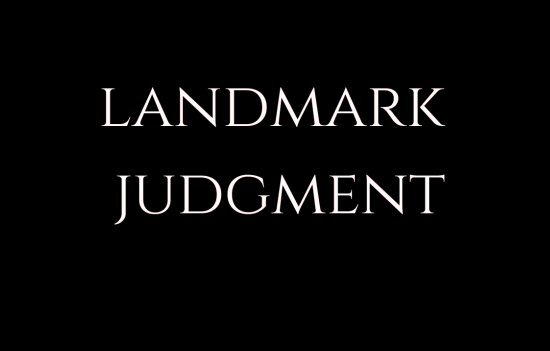CASE BRIEF
Petitioner – M.C. Mehta.
Respondents- Union Of India & Ors.
Bench- Y.K. Sabharwal, B.N. Agrawal.
Decided On: 07.05.2004
Statues Referred-
- The Constitution of India.
- Delhi Development Act, 1957.
- Delhi Municipal Corporation Act, 1957
Case Referred-
- M.I Builders Pvt. Ltd. Vs Radhey Shyam Sahu & Ors 1999(6) SCC 464.
- Enviro-Legal Action & Ors vs Union of India 1996 4 SCC 351.
- Faqir Chand & Anr. Vs Shri Ram Rattan Bhanot & Anr. 1973 SCC 572.
Facts –
- This case about unauthorized industrial activity in Delhi in residential area.
- In 1995, Supreme court of India passed various orders that the industries in non-conforming areas have to stop functioning since most of it were releasing highly toxic affluent.
- A public notice was issued to invite all industries operating in non-conforming use zone to give option to shift to available industrial plots in the industrial estates. Out of 93, 000 industries, only 513 industries responded.
- In contrary to court order MCD was granting licenses industries in non-conforming areas and permitting the industries to be set up in residential areas. According to the MCD, it was done under the directions of the State Government.
- The Court directed that if industries in the residential area cannot be moved and relocated for any reason whatsoever by 31st December, 1999, then those industries shall be shut down.
- On December 10, 1999, the State Government modified the order and extended the time up to march 2004.
Issue;
- What should be done about continued unauthorized use contrary to Master Plan and Zonal Plan?
Contentions by Parties-
Petitioner’s Arguments
- That the Government did not think it advisable to state what action it will take against those who were not found eligible or those who did not even apply and were continuing industrial activity in violation of law.
- That there was an unexplained figure of more than 32, 000 industries in non-conforming areas which would not be covered by INSITU regularization.
- That despite lapse of about 3 years, nothing significant, either in respect of infrastructure or the other conditions, has been done.
- That on one hand, the Master Plan specifies the moving of existing industrial units within a specified time limit and on the other new industrial units have come up even after enforcement of the Master Plan.
Respondent’s Arguments
- That the Ministry has made broad guidelines for the Master Plan which highlight some of concerns that need resolution as well as possible policy initiatives so as to deal with the problem that affect Delhi.
- That there is a growing variation between the plan for Delhi and city on the ground and, therefore, it is essential that the Master Plan policies should be implementable in an effective manner and vigorously enforced.
- That regularization cannot be done if it results in violation of right of life enshrined in Article 21 of the Constitution.
Judgment
The Apex Court directed that All Industrial Units that have come up in Residential/non-conforming areas in Delhi on or after 1st August, 1990 shall shut down.
The Central Government is directed to finalise within six months appropriate steps to be taken for making NCR region a success for industrial activity by removing the hurdles pointed out by the industry.
The Supreme Court of India appoint a committee. This This Committee would be responsible for stoppage of illegal industrial activity.
Conclusion
It can be perceived from this case that it is duty of government to shed its extravagant unbridled sovereign power and to forge in its policy to maintain ecological balance and hygienic environment in accordance to right to life guaranteed by Article 21 of the Constitution of India.

